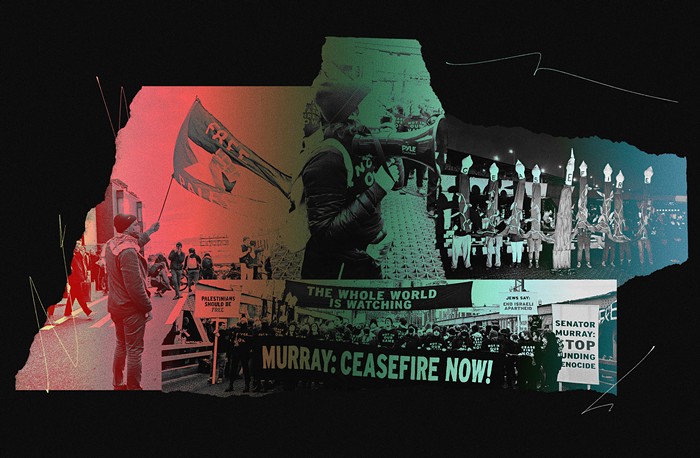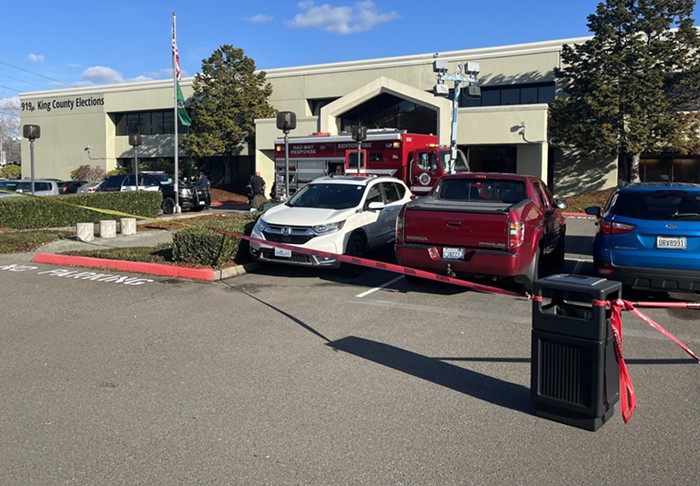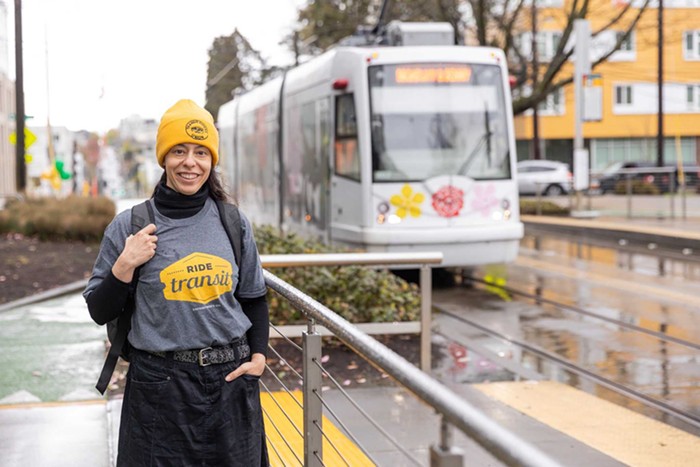Last Friday afternoon, May 27, dozens of bicyclists gathered near the cool mist of Westlake Center's water fountain, defying the summer's first heat wave. They were waiting for the start of the Critical Mass ride-a monthly, meandering group cruise through Seattle's streets. A couple of cyclists took advantage of the regular gathering of serious bikers to promote their new guerrilla website: the cryptically named ghostcycle.org.
The site-run by a handful of anonymous cyclists-had started up just a day before. It has a mission as simple as its ghostly black-and-white, text-only layout. "We want to know about your bike accidents in the Seattle area," the site says. "We are looking to compile this information as a resource for cyclists to use in isolating trouble spots in the City of Seattle." The site urges everyone to enter their accident info: date, location, whether the bike rider was obeying traffic laws, any injuries suffered.
The website will eventually result in a semi-official picture of potentially treacherous intersections and streets for the two-wheeled set. The city already has stats on how many people bike-it's estimated that 36 percent of Seattle residents ride for recreation, and up to 8,000 commute on a bike on any given day-and bike accidents are tracked to a limited degree. "We do it from police reports," says Marybeth Turner, spokesperson for Seattle Department of Transportation. (The city also keeps tabs on "pedestrian accident locations," while the state tracks vehicle collisions.) The biker-run database is the first cyclist-driven effort to track all accidents, whether or not there was a police report. "I don't know if any groups have ever called attention to crashes," says Emily Allen, chair of the city's Bicycle Advisory Board.
Bikers seem enthusiastic about the project: They're eagerly contributing their crash info to the site. "We got 40 in the first day," says one guy affiliated with the project, straddling his bike under a shady tree at Westlake, waiting for the Critical Mass ride to begin.
He and his cohorts-there are about a dozen bikers helping out-launched the Ghost Cycle project to raise awareness of bikes on the city's streets, especially as warm summer weather and sky-high gas prices means even more cyclists commuting or riding recreationally around town. They want to remain anonymous to keep the focus on bike safety, not themselves. Though Seattle is generally known as a bike-friendly town, "you're just not seen," the biker says. "Anybody who rides a bike, you're going to have hits or near misses all the time." He and his friends jokingly hand out "crash trophies" to each other. "Once a week, or every other week, someone gets knocked into," his friend adds, standing next to him at Westlake. They know one guy who lost a week's worth of memory after a particularly rough accident. One of the bikers was almost hit tonight, on his way to Westlake.
The Ghost Cycle bikers are mum on their plans for the crash data they're collecting. But bikers in a few other cities, like Pittsburgh, St. Louis, and New York City, have hosted similarly named underground projects. Those projects have utilized guerrilla art to highlight unsafe streets. Ghost Bike Pittsburgh featured white-painted, mangled bikes mysteriously sprouting up around the city, each a kind of art installation memorializing a specific bike accident. Public works employees in that city quickly remove the bikes. Similar symbolic bikes in San Francisco, however, have been known to stick around for months. Since 1996 in New York City, a group called Right of Way has morbidly stenciled at least 250 body outlines-and names-on the sidewalk along with the phrase "killed by car" to mark bicyclist and pedestrian deaths.
Seattle's Ghost Cycle bikers refused to say if they'd be doing some sort of guerrilla installation here. For now, they're just collecting info-word of the site has gone out on blogs frequented by bikers, and they also plan to post notices at bike shops-and seeing where Seattle's trouble spots are. (The railroad tracks in Ballard that intersect the Burke-Gilman Trail, one of the bikers says, is so far the number one location for non-auto related bike accidents documented via their site.) If anything further happens with the data, they want to retain the element of surprise. "We'll keep you posted," the biker at Westlake said, before rolling over to join the rest of his group for the start of their evening ride.


















